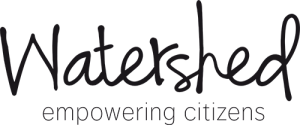
March 22 is World Water Day. The theme for this year is ‘Why waste water?’. This brings attention to the need to reduce and reuse wastewater. This is an important issue for people and nature around the world as both depend on clean freshwater. Globally, over 80% of the wastewater generated by society flows back into lakes, rivers and wetlands without being treated or reused. In low-income countries, only 8% of industrial and municipal wastewater undergoes treatment of any kind.
This is significant because water pollution has worsened since the 1990s in the majority of rivers in Latin America, Africa, and Asia due to increased wastewater. In a report last year, the UN Environment Programme[1] concluded that severe water pollution already affects around one-third of all river stretches on these three continents. Water pollution in the developing world is generally increasing as urban populations grow, consumption increases and the volume of untreated wastewater increases. The intensification and expansion of agriculture is also a major source of pollution due to run-off from fertilisers, pesticides and salinity.
This contamination puts hundreds of millions of people at risk. Most of the risk is from exposure to life-threatening pathogens in contaminated water via drinking and bathing, such as cholera, typhoid and other diseases.
Wastewater risk to wetlands
These risks go even deeper. While healthy wetlands can absorb waste and pollutants, and improve water quality through filtration and biological processes, poor water quality can negatively affect their functioning. Wetlands that are overwhelmed by too much waste will stop providing the goods and services on which people and nature depend.
Wetlands support the production of fish, and increasing levels of pollution are a concern to freshwater fisheries everywhere. Inland fisheries are a valuable source of both food security and livelihoods in developing countries. For example, Mali’s Inner Niger Delta is the 2nd largest floodplain wetland in Africa and produces 80% of Mali’s fish catch. Fish from the delta are critical to local livelihoods in this region, where hunger is a persistent problem, and are exported across West Africa. The fish are also food for the millions of waterbirds that are dependent on this healthy wetland nature.
These wetlands are at risk in part due to a lack of water and sanitation infrastructure in Mali, as large amounts of contaminants are introduced into water bodies and soil. Water quality monitoring shows that at many locations water is contaminated with bacterial pathogens, nitrates and heavy metals. But while water pollution is a serious and growing challenge, opportunities exist to make progress towards Sustainable Development Goal (SDG) 6 to ensure water and sanitation for all.
Increasing water security by tackling wastewater
Sustaining and restoring water-related ecosystems is imperative for achieving many of the SDGs. A key recommendation to improve the health of water bodies from the UNEP report is to restore wetlands in order to remove pollutants and carry out other actions to protect ecosystems. The report also recommends treating polluted water before it enters waterbodies.
In Mali, we are taking this approach, building on our nearly two decades of work conserving wetlands, nature and livelihoods, by addressing wastewater and water quality as part of our Watershed partnership.[2] By increasing the capacity of civil society to engage with government and advocate for better treatment and reduced discharges of wastewater, we aim to improve the quality of drinking water, reduce waterborne disease and help keep ecosystems healthy so they can continue to produce goods and services like water and fish. This in turn will help achieve progress towards the SDGs for health, food and water security.
[1] UNEP. (2016). A Snapshot of the World’s Water Quality: Towards a global assessment. United Nations Environment Programme, Nairobi, Kenya. 162pp
[2] With IRC, Simavi, AKVO and the Inclusive Green Growth Department of the Dutch Ministry of Foreign Affairs of the Netherlands. www.watershed.nl
Author by Wetlands international communication dept.

